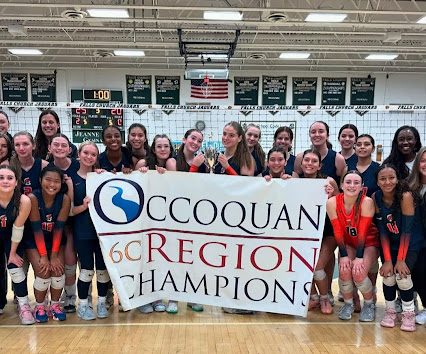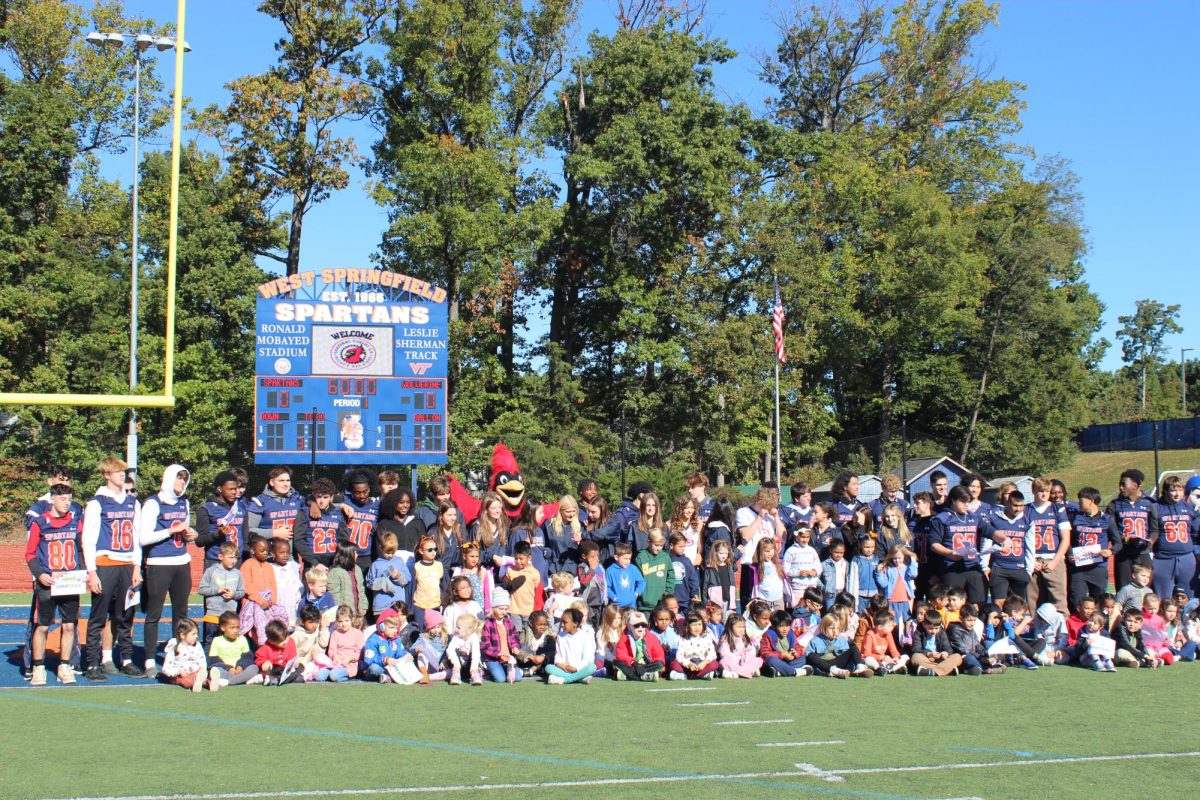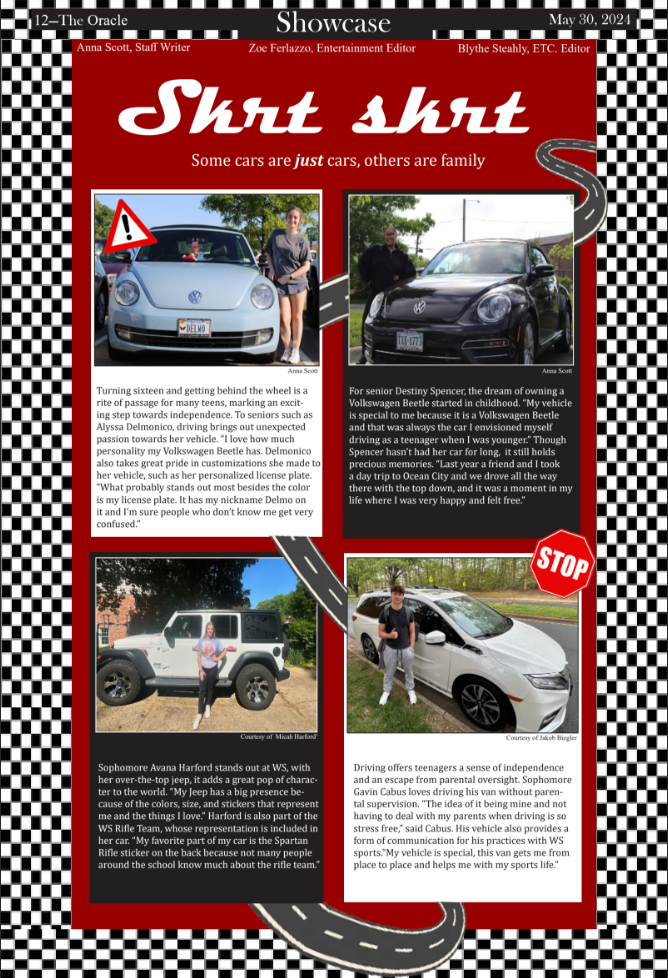Celebrating 50 years at 6100 Rolling
We’ve undergone significant change since our doors first opened in 1967
March 29, 2016
Looking around now at this decrepit building we call home, it is easy to think that WS is ancient; and in some respects, it is. When WS first opened its doors in 1966, the area was relatively unknown, desolate and quiet. While Springfield remains quiet, the last 50 years have brought along a whirlwind of change absorbed by the thousands of graduates WS has cultivated over the years.
“[My time at WS] was an eye-opening experience that helped shape who I am today,” said Rebecca Naramore, WS Class of 2009. “Enjoy the little things; after it all, those small moments matter most.”
WS has humble beginnings: In the 19th Century, Springfield was nestled between farmland and the growing US capital. In the 1960s, as builders saw potential in the area, housing developments sprouted out of the well-irrigated soil, all previous farmland.
Feeling optimistic, FCPS built a shiny new school on Rolling to accommodate the hordes of military families that were moving to the area. For the first semester of the 1966-1967 school year, the building was not yet ready; therefore, Spartans attended Lee High School on a “split shift,” where WS students studied in the morning and Lancers went from 10 a.m. to 5 p.m. This was only temporary and by 1967 student life at WS was rolling along.
“Everybody loved to dance,” said Mary Randolph from Lee’s Class of 1971. “There were dances after every football and basketball game, sometimes Saturday nights, too.”
This was when Annandale’s football team was the one to beat, and Einstein’s Bagels was a Roy Rogers.
At school, at a church, or wherever they could go, dancing was freedom and an expression of character.
“Prom was a divisive statement on who you were,” said Craig Black, WS Class of 1971. “There was an organized anti-Prom as part of the anti-war effort.”
The Vietnam War was one of the many social currents throughout the country that seeped into our hallways. Over the decades, discussion of the Cold War, the Lewinsky scandal and No Child Left Behind were as rampant as heated political discussion today. In general, times were also more loose without the constant stare of the Internet—some Spartans would, on occasion, hitchhike home and until the ’80s WS had a designated smoking lounge for students, since the tobacco purchase age in Virginia was 16 until 1991.
“There were certain bathrooms where you knew,” said ’76 graduate Mary Whipple, referring to the smoke that would attack students in notorious areas.
This history embodies our city: at a crossroads between suburb and rising city, struggling form its own identity when overshadowed by the powerhouse 20 minutes away.
“WS offered a place to grow up with security,” said Elizabeth Weiderhold, one of the Class of 2006’s valedictorians. “You’re allowed to become an adult, but it’s still OK to be a kid.”
Then came the Internet. From AOL Instant Messenger in the early 2000s to the abundance of mediums today, the World Wide Web significantly modified high school life, from the way we learn to what our outside influences are.
“You are brave. Then, teasing ended when you left the building,” said 2001 WS veteran Amy Whipple, daughter of the aforementioned ’76 Spartan. “Now, you always have to be on the lookout when online, which is scary when you’re young.”
What WS lacks in economic diversity it makes up for in its multicultural student body. To put it in perspective: WS has been around for almost as long as FCPS has been desegregated. The first school year, there was only one black student, Norville Wright. That has steadily increased over time to become the welcoming mixing pot that the school is today, to recently include a vibrant LGBTQ community.
“I had friends all across the ethnic and racial spectrum,” said Whipple.
Diversity seldom ended with friend groups. The administration at WS has always been incredibly attentive to sensitivities, contributing to our warm atmosphere that is reflective of the cohesion between the main office and the classrooms.
One thing that resonates with former Spartans is the quality of our teachers.
“There are a handful of amazing teachers that will aid you in life,” said Don Watkins, from WS Class of 2000. “WS is great for giving them a home.”
Teaching in a multifaceted locale is challenging, but our teachers show their skill in flexibility: when students come to them for personal or scholastic help, they are more than willing to lend a hand.
“When I was there, all I wanted was change; when I got to college, I realized the degree of education elsewhere and found I was blessed to go to WS,” said Sydney Manning, who graduated in 2014.
While Spartan culture may have experienced rapid advancement, the state of our building shows that physically, effective change is at snail’s pace. WS was the first school in the county to get a turf field in 2006, and some minor changes have been made in the last 50 years, but the building remains much the same.
The technology rooms were once used for Industrial Arts, a class for shop and woodwork much like the one in “Ned’s Declassified School Survival Guide,” but for boys only. Gender-specific areas and classes were commonplace pre-Title IX, a federal law that criminalizes discrimination based on sex. In the ’70s, for example, the Aux Gym was designated for girls and the Main Gym for guys. Several sports were also segregated or nonexistent.
“Records show that Girls Cross Country and Basketball didn’t compete until the mid-’70s, around the same time that Field Hockey and Tennis became a sport at WS,” said Director of Student Activities Andy Muir. “It wasn’t until the mid-’90s that Volleyball and Lacrosse came around.”
With impending renovations, the math hallway, once fully carpeted, will return to its flowery state as a courtyard.
“At 50, WS is due for a facelift—time rolls on,” said Wolcott Baird, who graduated from WS in 1990 and now prowls the halls teaching math.
As for school celebrations, plans are brewing for a “WS 50: Hall of Fame” in October of the 2016-17 school year, with festivities including previous championship winners and, of course, our future football team. They will go on just as, ironically enough, the school prepares for a physical rebirth.
“This should be a nostalgic, exciting time for the people coming back,” said Muir.
After 50 years, however, high school is still only high school. Many graduates advise to take advantage of the plethora of opportunities that WS offers, and take the time to discover what you are passionate about and run with it.
“When in high school, focus on blazing your own trails and finding what you love,” said Watkins.
While most people find it odd that WS is already 50, take it as a moment to reflect; as we poise for renovation, appreciate the building now for all it has withstood. If only walls could talk.
“I’ve been here from the beginning,” said 1971 graduate Rob Benton. “This makes me feel old!”




